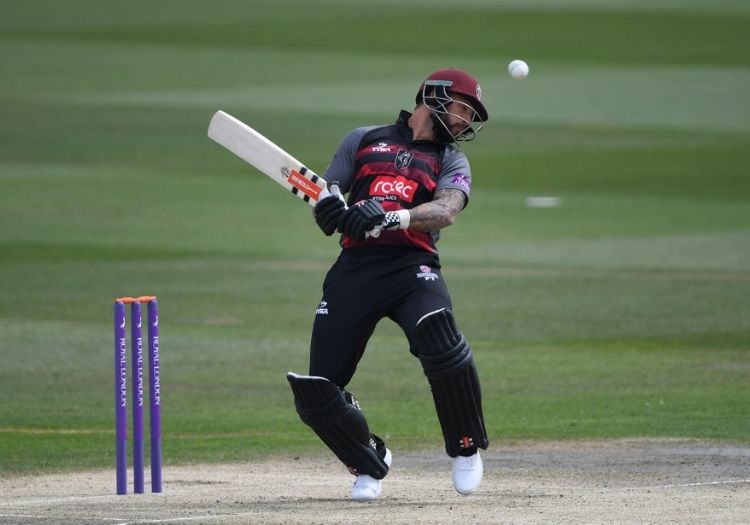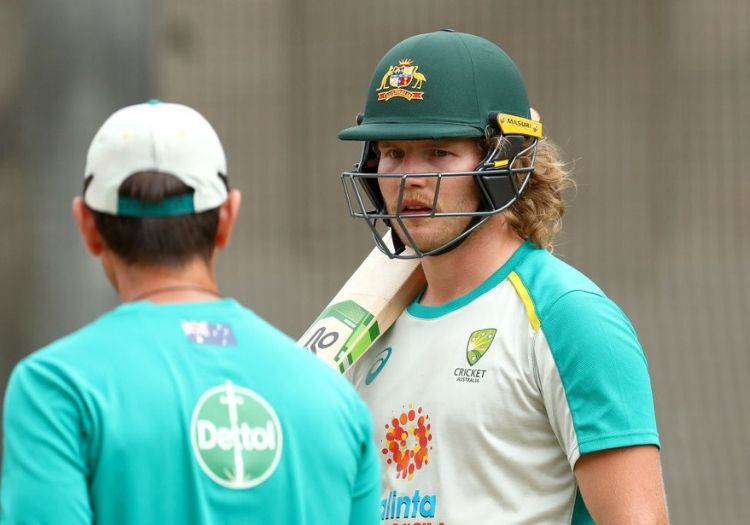JAMES COYNE - EXCLUSIVE: The ECB cricket committee looks set to discuss any proposed regulation changes at its next meeting in early March

T20 Blast and Royal London Cup fixtures released
County Hub: Latest news, interviews, live scores
The ECB have discussed trialling the reduction of a bouncer limit from head height to shoulder height in this year’s Royal London Cup, The Cricketer understands.
At present in all professional competitions a bouncer is defined as a delivery which passed or would have passed the striking batsman at between shoulder and head height when standing upright at the crease.
However, the effects of injuries inflicted by the bouncer is being discussed by both the ECB and MCC in light of an increasing number of concussions suffered by top-level batsmen, most prominently the Australian opener Will Pucovski.
There have even been isolated calls for the bouncer to be banned from cricket altogether on health and safety grounds, such as from the prominent Sydney Morning Herald cricket columnist Malcolm Knox.
And with brain injuries a rising cause of litigation in football and rugby, the UK culture secretary Oliver Dowden and sports minister Nigel Huddleston have announced they will convene a summit across sport to discuss the subject, with Michael Vaughan set to act as cricket’s expert witness.
At present the regulations permit two short-pitched deliveries per over in first-class and List A cricket, and one in T20. The umpire calls wide if any delivery is deemed to have passed above head height.
The ECB cricket committee would probably have to discuss any proposals at their next meeting in March were it to be brought in.

The ECB are to discuss a proposed bouncer regulation change for the One-Day Cup next month
A trial altering the definition of a bouncer is not entirely new: some county one-day competitions in the early to mid-1990s switched to a shoulder-high limit. One former first-class batsman who played under those regulations told The Cricketer that “it did make batting a little easier, as it allowed you to set yourself a bit more”.
The schedule for this year’s Royal London Cup was announced on Friday. The competition, which was not held last year due to the Covid-19 pandemic, is this season due to take place at the height of summer between July 22 and August 19, with the final on a Thursday at Trent Bridge.
It depends on how much cricket is possible over the summer, but it could be that the Royal London Cup takes place at a time when pitches are fairly quick, especially since the competition is not set to be televised up to the final, and therefore does not require wickets in the centre of the square to suit Sky Sports cameras.
The Royal London Cup proposal is just one part of detailed ECB studies into the subject of bouncers and concussion, which the governing body are keen to make sure they stay ahead of.
They instigated the move towards British standard helmets with the standard BS7928:2013 grading. Helmets worldwide have improved considerably since Stuart Broad and Craig Kieswetter were struck in the gap between peak and grille by fast deliveries in the 2014 season; Broad’s batting has never recovered and Kieswetter had to leave the game due to vision problems. Since then the gap between peak and grille has reduced.
Neck stems have come in since the tragic fatal injury sustained by the Australian batsman Phillip Hughes on the back of his head later that year.
Unlike other countries, even when the spinners are bowling the ECB insist that England batsmen wear helmets at all times and their wicketkeepers when up to the stumps.
Concussion checks are now mandatory in case of a player being struck on the helmet. They have a national baselines testing programme for concussion, with every county player screened annually.
In 2018, following Cricket Australia’s lead, the ECB introduced concussion substitutes into domestic cricket. This was followed by the ICC adoption of it in international cricket in time for the 2019 Ashes. Marnus Labuschagne was the first to play Test cricket as a concussion sub when he came in at Lord’s in light of the worrying head injury sustained by Steve Smith.
Medical research into concussion in cricket is detailed and ongoing, spearheaded by the ECB medical director Dr Nick Peirce.
MCC, the game’s Lawmakers, are early into “a period of consultation” with cricket personnel throughout all levels over bouncers and concussion, MCC head of cricket and assistant secretary John Stephenson confirmed.
Stephenson told The Cricketer: “Whether or not there’s a Law change, it’s our responsibility to look into this robustly, examine the area and ensure a good outcome. Already a lot of research has gone into concussion in cricket compared to other sports.”
The MCC World Cricket Committee, chaired by Mike Gatting, will convene online on February 18, with the issue of short-pitched bowling top of their agenda. Various MCC committees have been discussing the subject.
It seems as though any Law change – if there will be one at all – is some way off. Though MCC write the Laws for the entire game, individuals boards can supersede the Laws by setting their own regulations in their own competitions.
Stephenson, who also sits on the ICC Cricket Committee, has tabled this subject for their next meeting in March. It has been known for ICC playing regulations to differ from other competitions quite radically – such as with the prohibition of a runner in international cricket.
Many prominent voices, including Mike Atherton, Mike Selvey and Steve Waugh, argue that batsmen are getting hit more often because of their readiness to play fast bowling off the front foot and a reluctance to duck and weave, lulled into a false sense of security by helmets and the attacking approach required in limited-overs cricket.
In English club cricket, the issue of short-pitched bowling is usually less of an issue until the higher levels, where the bowlers and the pitches are quicker. All under-18s are now instructed to wear helmets when batting, and the ECB “strongly recommend” that over-18s do the same.
Nonetheless Dr Michael Turner, of the International Concussion and Head Injury Research Foundation and University College London, has recommended banning bouncers in all under-18 cricket, due to the lasting effects of concussion on young people when their brain is still developing.

Head injuries have become a major talking point in the game, with Australian Will Pucovski among those to have suffered
But a two-track game would seem to be fraught with complexity, as players pass between professional and recreational matches. Vaughan has expressed his opinion in his Telegraph column that it would leave young players ill-equipped to face fast and short bowling when they do emerge into a higher standard of cricket.
Some leagues place their own restrictions on bouncers – for instance the Hertfordshire League permits one per over. But in cases where a batsman does receive a spell of short-pitched bowling bouncer limitations are not always applied by the standing umpires, especially at the lower levels where the umpires are often the rest of the batting side.
It is at Test level where stricter regulations – or outright outlawing – of the bouncer would surely have the most effect. All countries would be affected by it, but in particular countries outside Asia where the pitches are traditionally quicker.
As Darren Sammy’s comments last July demonstrate, many in the Caribbean still resent the limitations placed on bouncers by the ICC since 1991, as West Indies dominance of the 1980s was based on persistent short-pitched bowling.
Before 1991, there were no limitations on the number of bouncers and it was down to the umpire to use their discretion to stop “intimidatory bowling”. Umpires are still permitted through Law 41.6 to do this when they feel a tailender is physically threatened, but in reality it seldom happens as there is an unwritten understanding that all professionals should be able to cope; this reluctance to apply the Law upsets some in the game.
Let alone the public appetite to watch exciting passages of short bowling, the entire balance between bat and ball – so crucial in red-ball cricket, if slightly less in the white-ball formats – would seem to be at stake if the bouncer were banned or seriously curtailed.
As Broad himself pointed out recently, without the bowlers’ capacity to push the batsman onto the back foot, a game without bouncers could become a very predictable one.